I cut my teeth in precision rifle shooting with Leupold optics using their Mk4 rifle scopes and Mk4 spotting scope. That being said, I haven’t necessarily been a fan of Leupold optics for some time so when the opportunity presented itself to review their VX-3i Long Range Precision (LRP) scope, I thought what better person than I? Please don’t misunderstand my meaning though. I’m not a hater. I respect Leupold tremendously for what they’ve done for the shooting community as a whole. I just feel, like many other shooters do, that Leupold rested on their laurels for a long time while other manufacturers advanced in the long-range market to offer new and innovative products. To Leupold’s credit, they are starting to turn that trend around and the VX-3i series of optics are aimed at the long-range hunter or shooter on a budget that would like some of the features found on more high-end scopes. This is the first Leupold optic that I’ve had my hands on in a long time so it’s been interesting to see how the optic performs both mechanically and optically.
A 360° Tour

Leupold’s 6.5-20X50 LRP weighs in at less than 22 oz at just 14.5″ long yet packs in power house features like matching reticles and turrets, throw levers, and a zero stop system.
When you pull the scope out of the box it has that unmistakable Leupold look and feel to it: its light but not flimsy, the matte anodized finish is flawless, and it looks like it means to do business. In the box, the scope comes with the regular accouterment including a user manual, a wrench for the turrets, a Leupold sticker, but no sunshade. Taking their cue from similar optics in the long-range optic field, the VX-3i LRP offers side focus parallax adjustment, milliradian or MOA adjustments, matching reticle options, a zero stop, a covered windage turret, and a throw lever on the magnification ring. Inside the box, a small baggie contains a finish ring that you can install in lieu of the turret cover and a small plug that can be installed if you won’t want to run the big throw lever. This is not at all an uncommon package for a scope in this market and it shows that Leupold is paying attention to the competition.

The Leupold LRP scopes have one-piece aircraft grade aluminum scope tubes for maximum strength while providing classic looks that feel at home on any rifle.

The most striking feature of the LRP scopes is the large elevation knob that protrudes 1.375″ above the turret globe. This elevation knob is actually pretty cool though as it houses an integral zero stop that’s super easy to set and a revolution indicator that drops down as you dial in more elevation.
The 30 mm main tube of the 6.5-20X50 LRP that I have for review has 80 MOA (23 mils) of internal elevation adjustment, which is more than enough for those long-range targets when paired with a 20 MOA base. The most striking feature of the LRP scopes is the elevation turret, which is different from anything else I’ve seen come from Leupold. I think many of us have seen or even used the typical target turrets from Leupold like the M1 turrets but the LRP turret almost looks upside down in a way. Its awkward appearance notwithstanding, the turret is actually pretty cool since it integrates a super easy to set zero stop with a with a unique revolution indicator that is nested within the turret cap. As you dial in elevation the indicator drops down below the cap so the turret actually doesn’t get any taller no matter how much elevation you dial in. Setting the zero stop is super easy once you have your rifle zeroed at your chosen distance. Just use the included Allen key to loosen the set screw and turn the turret back to “0,” that’s it, you’re done. This turret adds functionality to the scope so that it stays competitive with some of the other offerings while still being really easy to use for first-timers.
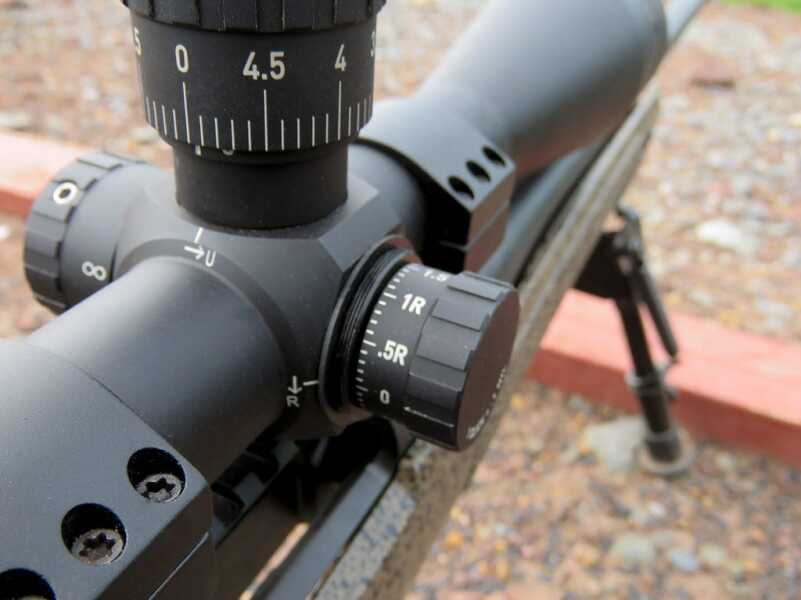
Most practical precision rifle shooters will tell you that they dial elevation and hold wind when shooting a target. Following that trend, Leupold has provided a covered windage knob on the LRP so that after you zero, you can keep your knob from being inadvertently turned. If you want to go the traditional route there’s a threaded ring that can be installed in place of the cap to protect those fine threads.

Just like most traditional Leupold scopes, the diopter focus can be turned by loosening the lock ring and rotating the ocular until the reticle is in sharp focus. Also seen is the integral throw lever and if that’s a little too much, you can remove the knurled portion and replace with a plug for a more low profile look.
Another thing that will jump right out at you when you first look at the scope is the throw lever that screws into a recess in the magnification ring. While the ridge on the magnification ring is sufficiently large enough that you may not need the lever, it still gives you some extra leverage if you need to quickly go from high to low power or vice versa. It used to be that if you wanted a throw lever you had to buy a separate piece that fastened around the magnification ring so it’s nice to see that they are becoming standard features on scopes. That being said, if the lever gets in the way or you simply don’t like the look of it, it’s easily removable with a screwdriver and you can insert the included plug into the threaded hole.
| Weight (oz) | 21.7 |
| Length (in) | 14.5 |
| Linear FOV (ft/100 yd) – Low | 14.7 |
| Linear FOV (ft/100 yd) – High | 6.1 |
| Eye Relief (in) – Low | 4.41 |
| Eye Relief (in) – High | 3.62 |
| Elevation Adjustment Range (MOA) | 80 |
| Elevation Adjustment Range (MIL) | 23.3 |
| Windage Adjustment Range (MOA) | 80 |
| Windage Adjustment Range (MIL) | 23.3 |
| MSRP | $1,299.99 |
| Street Price | $999.99 |
Besides those standout features, the scope is decidedly Leupold, without really any other surprises, which may not necessarily be a bad thing. You’re still getting proven Leupold engineering, with some added features that will appeal to the long range hunter or marksman, all backed by Leupold’s legendary customer support should you ever need it.
Optical and Mechanical Performance
For me, and many other shooters, mechanical performance of scope trumps optical performance when you may have to rely on that optic to hit long range targets. It won’t matter how well you can see the target if your scope can’t track reliably enough to enable you to hit with the first round. To test the mechanical function of the optic I ran two tracking tests, a bench test followed by a live fire tall tracking test at the range. I ran the bench test using a simple Leupold boresighter that would give me a fixed reference point to observe the movement of the reticle as I dialed in elevation. Although it’s not perfect it will give an indication of how well the scope is going to track so that I don’t get any nasty surprises when I hit the range. I was pleased to see that the scope appeared to track accurately through 12 mils of elevation travel and returned perfectly back to zero.
From there it was off to the range to do a tall tracking test with the scope mounted on my Bergara HMR in 6.5 Creedmoor. I was only able to do a 10 mil tall tracking test primarily because of the limits of the backstop at the range, plus any anomalies in tracking that will affect your shooting will probably show up by the 10 mil mark. The results from the live fire tracking test showed that this particular scope may trend a little low from 5-10 mils, because I noticed the impacts tended to be at the bottom of the 1″ dot. The distance from the center of the topmost group when I had 10 mils dialed to the aiming point was 35.5,” which would equate to a click value of .355 mils vs .36 mils. To be completely fair, that’s within the margin of error for the rifle and the scope likely tracks perfectly. Also, it’s not necessarily unheard of for the click value of an optic to be off a little bit—that’s why many ballistic programs allow you to calibrate the click value so that it can provide the best possible result. There could have also been some built-in error regarding the distance from the optic to the target that could’ve resulted in trending that was seen on the target. Mechanically though I will say that based on what I’ve seen so far, it’s a good scope.
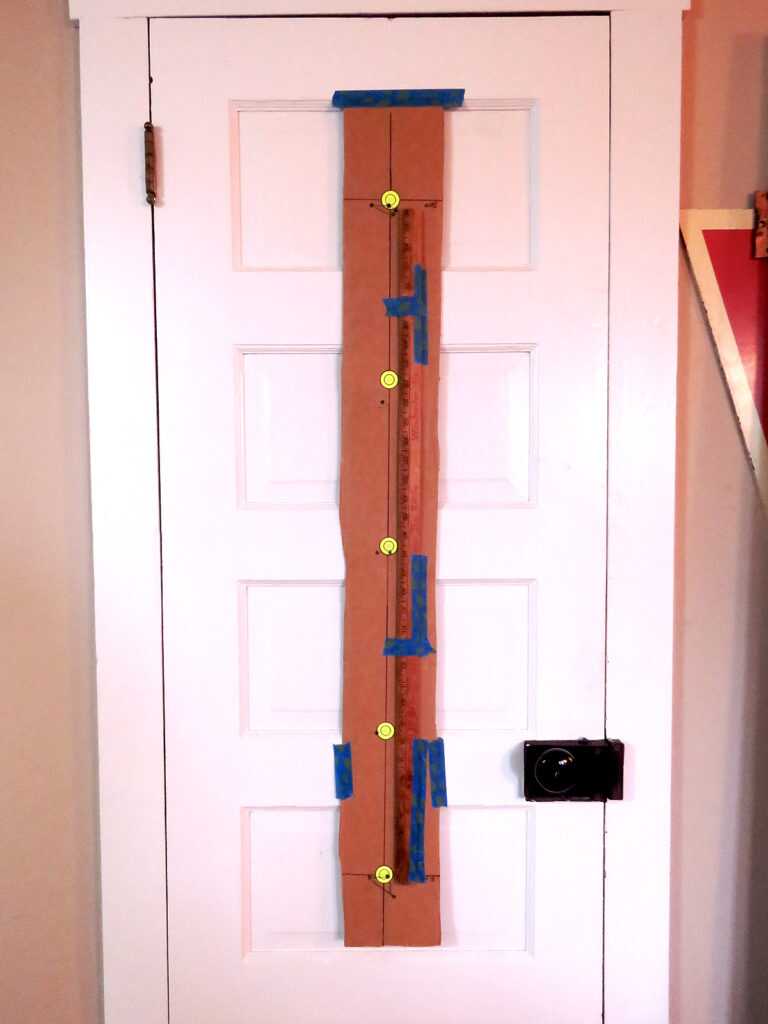
The LRP passed the tall tracking test at 100 yards with flying colors. From the center of the three shot group at the bottom to the group at the top is exactly 36″ or 10 mils, just what was dialed in to the elevation turret. The tracking was further reinforced later when shooting at long range.
Now, everybody wants to know right off the bat how good the glass is on a particular scope, and in this regard, Leupold does a pretty good job. It’s not the best I’ve ever looked through but it’s also not the worst. In fact, I was quite surprised by its capabilities in low light. In the daytime looking at light colored targets, there is a noticeable amount of chromatic aberration on the upper end of the magnification range. That happens to many scopes that are within the price point that this optic is in and it’s just something you sort of deal with. One way to do that is to dial down the magnification setting a little bit, which can also help deal with wicked mirage, and having a first focal plane reticle makes that easy to deal with. The reticle subtensions stay the same from high to low magnification so no matter where you are in the range you can effectively use the reticle. First focal plane reticles have almost become a standard for long range hunters, shooters, and competitors so it’s nice to see more manufacturers offer more options.

This shot was taken well after the sun had set behind the hill and I had no problems seeing details on the barn and adjacent building well after that. I easily believe this can be owed to Leupold’s Twilight Max Light Management System.
To help bring the target image in focus the scope has a side focus parallax, something else that is becoming more standard over the traditional adjustable objective. There are a couple of weird quirks that I noticed with the LRP’s parallax knob. The first thing is the markings on the knob in relation to distance, you have dots that decrease in size to correspond with a farther target distance and then you have an infinity marking at the end. With most scopes that I’ve used, the knob will stop at or just past the infinity marking but on the LRP you still have another 1/2″ of travel or so before you hit the stop. The other weird thing is the parallax range where most scopes in this market have a parallax range of 50 yards to infinity, it appears the LRP’s range is about 60 yards to infinity. When I was shooting my rimfire at 50 yards I was unable to get the image clear and parallax free with the LRP. For a long range hunting or precision rifle I don’t think that’s going to be that big of a deal but if you were looking to use this on a rimfire then it probably will not work out all that well.
Range Time
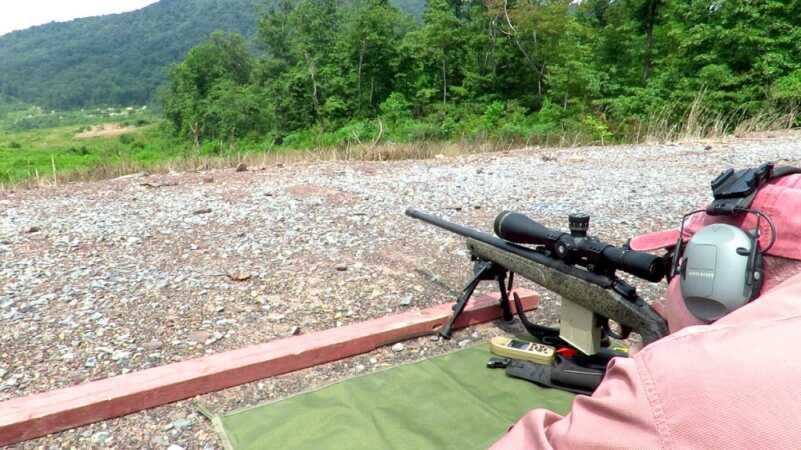
Shooting out to 860 yards was effortless with the 20X top end that allowed me to easily see my impacts on steel and the CCH reticle made it even easier to correct for my misses.
There’s only so much you can tell by a scope shooting it at the 100-yard range so I headed out to Peacemaker National Training Center’s Frontier Range to stretch its legs out some. Starting out at 300 yards I dialed up 1.3 mils and the Bergara stacked the rounds right on top of each other exactly where I’d placed the crosshairs. Not wanting to hang out at the mid-range targets all day I immediately went out for the longer steel past 800 yards. Dialing up 6.5 mils on the turret pushes the indicator barrel down into view to reveal a 5, to indicate five mils dialed on, which makes it easy to figure out where you are in your elevation travel. The steel IPSC was 810 yards away and despite the chromatic aberration it was no problem seeing my impacts on steel, the elevation was perfect, it didn’t appear high or low on steel, so maybe when I ran the tall tracking test I was having an off day and pulling them low. I wanted to try out the CCH reticle for hold over so I dialed back to zero and decided to shoot the 300-yard target and then immediately go back out to the 810-yard target. I’ll get into the reticle some more in a separate piece but the subtension of the reticle made it easy to hold 1.3 mils and then go straight out and hold 6.5 mils to engage the far target. The impacts were on top of the ones from when I dialed my adjustments so that further reinforced the accuracy of the adjustments since the turret adjustments matched the reticle holdovers.
Read more about the CCH Reticle HERE.
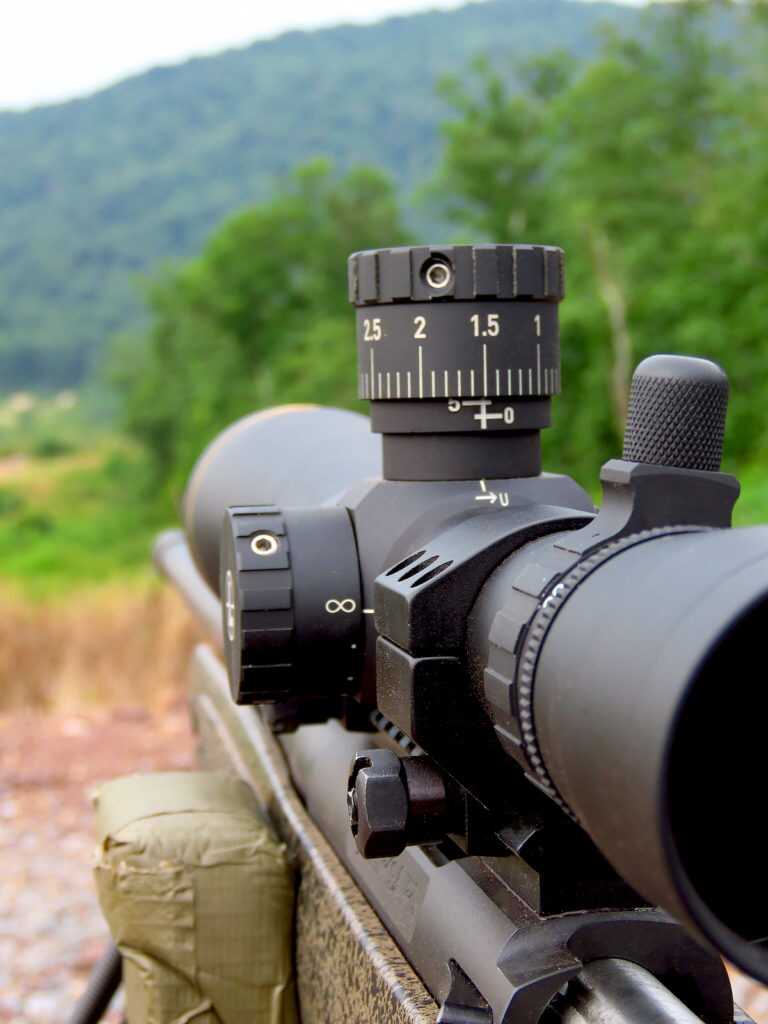
Dialed in for an 810 yard shot you can see the revolution indicator start to come in to view. The top of the knob never gets any higher, instead, the indicator drops down below the knob as you dial more elevation. Additionally, to keep from getting lost in the adjustments the numbers actually represent the amount of elevation in a given revolution. In this case I dialed 5 mils through the first revolution and I’m 1.5 mils into my second for a combined 6.5 mils.
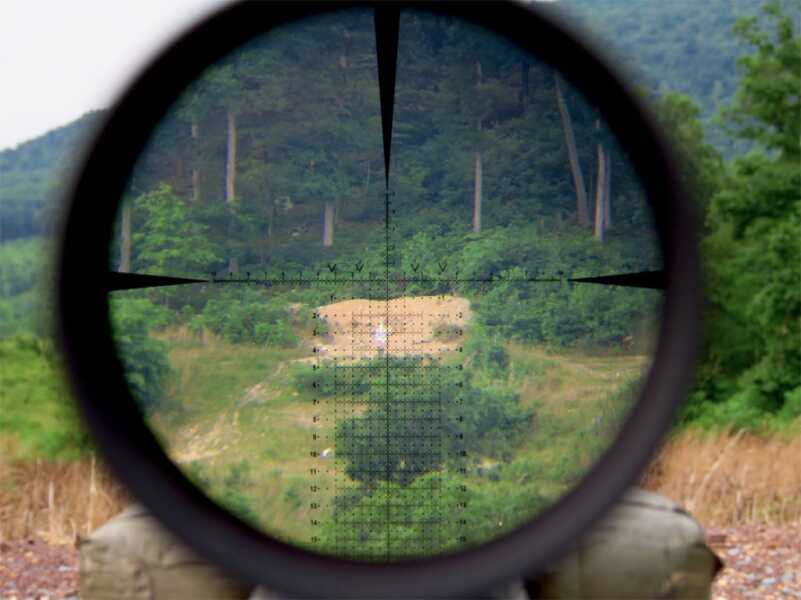
The CCH reticle is a mil-based hold over-type of reticle that is practically brand new to Leupold’s reticle line up. This first focal plane reticle has features that help with hold over, ranging, and moving targets that are accurate at any magnification setting, living up to its name, Combat Competition Hunter.

With the power dialed up the 20X you can see that most of the little intersections are open so that the block less of the target and there’s a fine center dot for precise reticle placement.
My Conclusion
The VX3i LRP isn’t fancy, it comes in a pretty plain box, there isn’t precision cut foam holding everything snug, and the scope itself is all business. While this scope isn’t a successor to the Mk4 tactical scopes, it’s an evolution of the venerable VX-3 line that has served sportsman for decades. That being said it has the features necessary for long-range shooting in a lightweight package that I think hunters and marksman are going to appreciate and actually use. The scope is a great value for its price especially when you consider it is American made. I know I have not always been a huge fan of Leupold optics in recent years but this scope has definitely shifted my opinion and I look forward to using more of their products in the future.
Visit Leupold to learn more about the VX3i by clicking HERE.

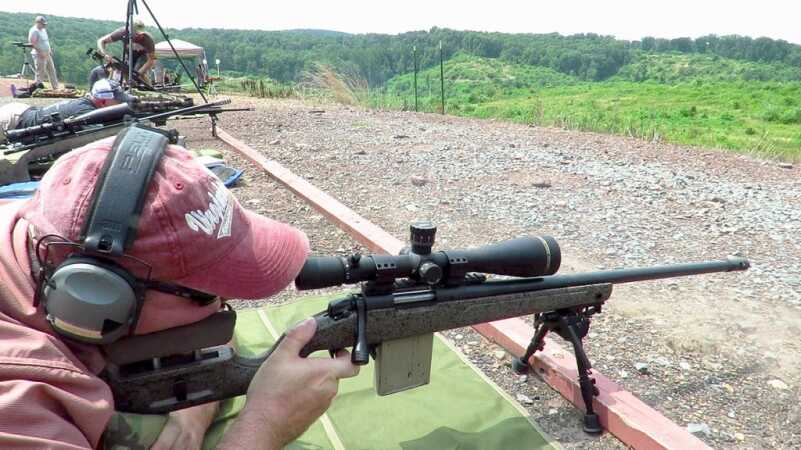
Good article, thanks!
Nice scope but wat too expensive unless its made out of unobtainium .
Others out there are of equal value for three to four hundred dollars less . Like Nikon Black, Vortex , as well as several others.
Great eval and thank you Leupold!
I’m buying one ASAP. I’ll drink less beer and eat less Cheetos. I’d rather shoot than sit in front of the TV watching football and complaining about how much good equipment costs.
*Two questions these reviewers never answer: First and foremost “Parallax”…..does it have a tendency for left hand or right hand shooters. Secondly, on a chilly day what about fogging? Which end or both?
One of the best creation of leupold. It is best scope for the money I’ve ever use. I mount this scope with my remington 700 and its working awesome and I’m enjoying my hunting season.
Looks like a nice scope. I like Leupold scopes more than any other brand but I just can’t bring myself to pay $1000 for a scope. I will keep using my VXR’s
I’ll stick with Vortex, can’t afford to gold ring holiness.
Leupold makes great optics, but for a fella like me, it’s far less stress to simply walk closer to the animal. Beside’s, by the time I got that reticle calculated out, a buck would have already dropped his antlers.
Lol!
TOP comment of the day for sure, maybe all time…awesome.
So what do you think…Leupold VX or Bushnell XRS?
Sweet baby Jesus could that elevation turret be any bigger